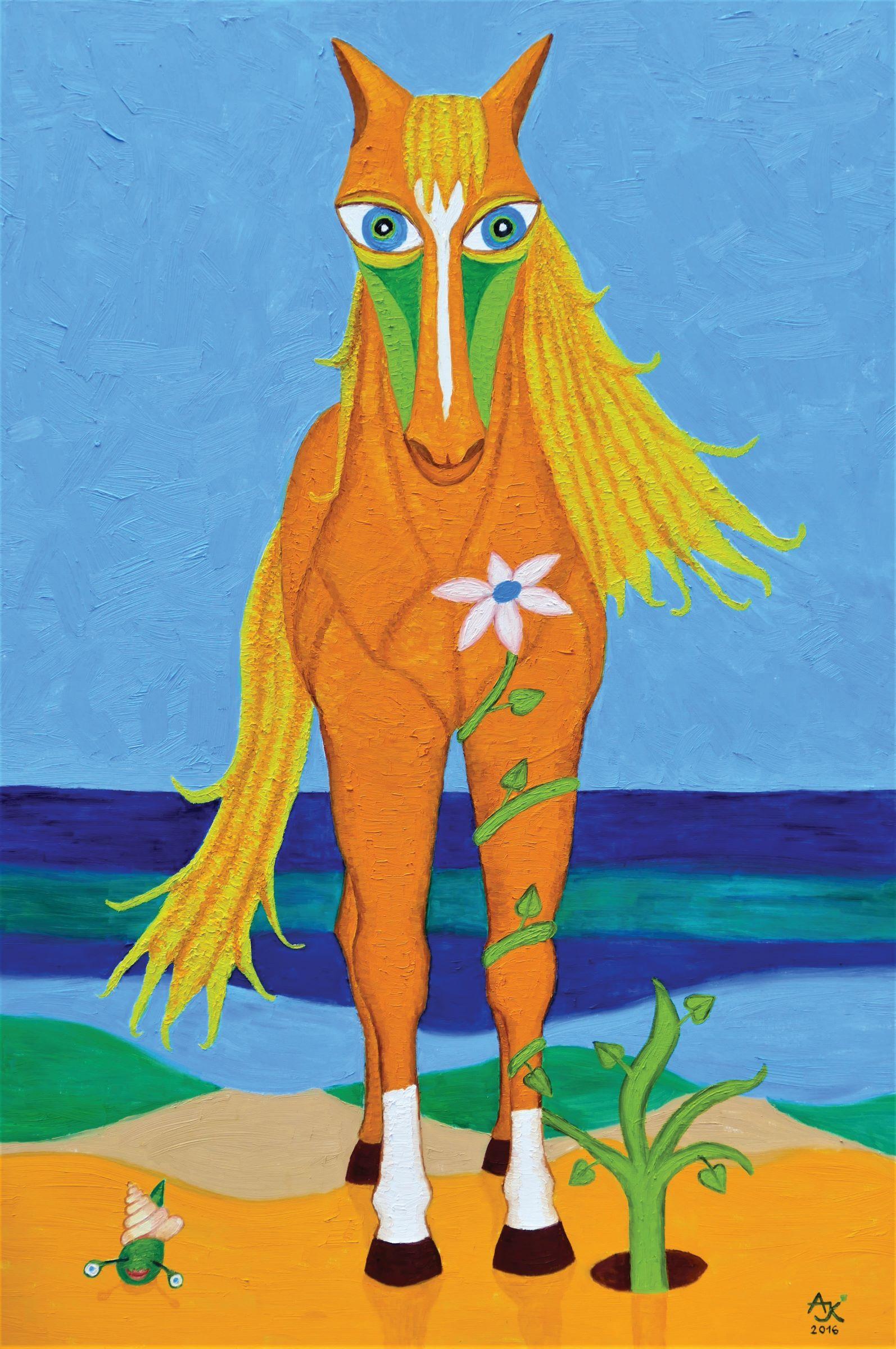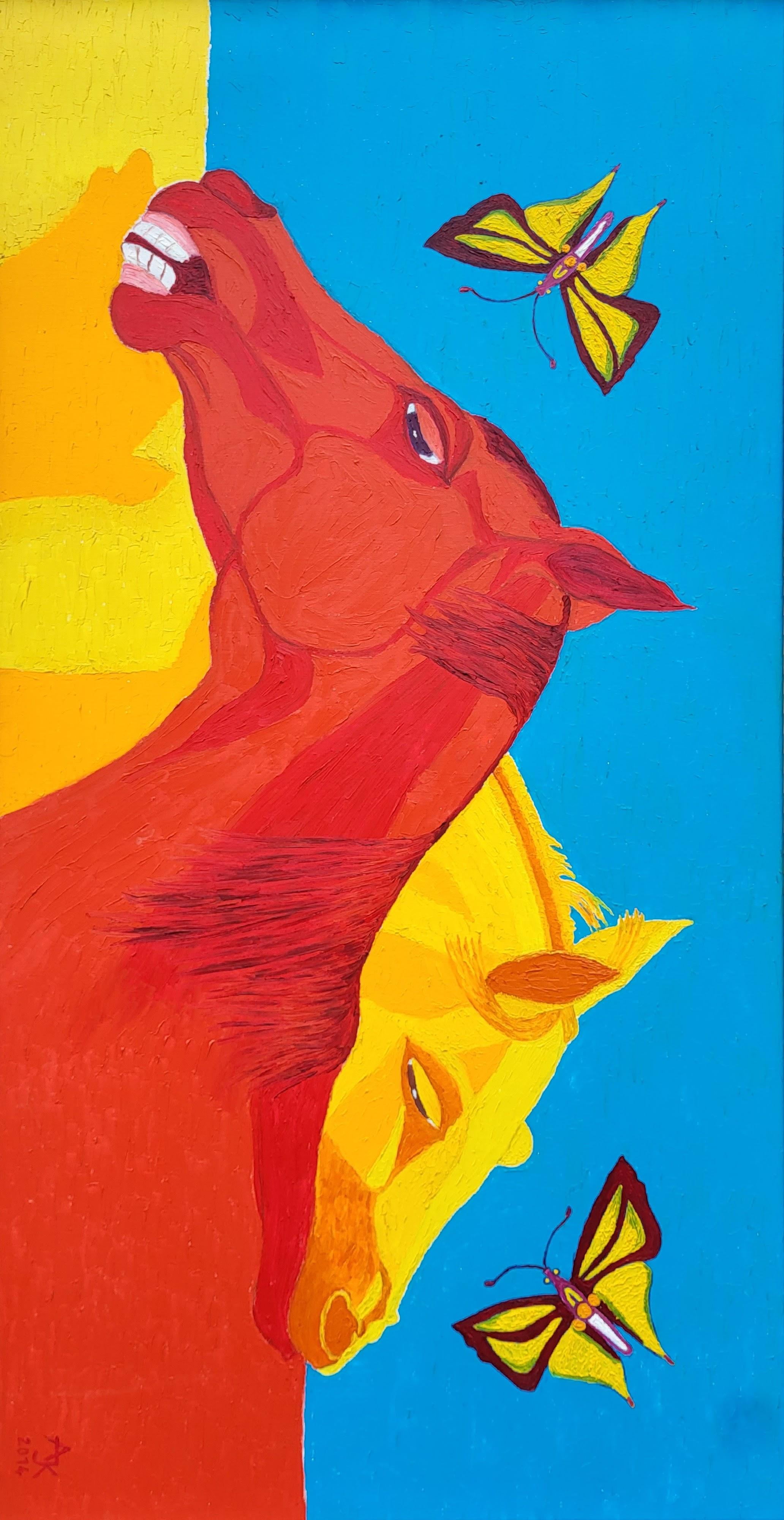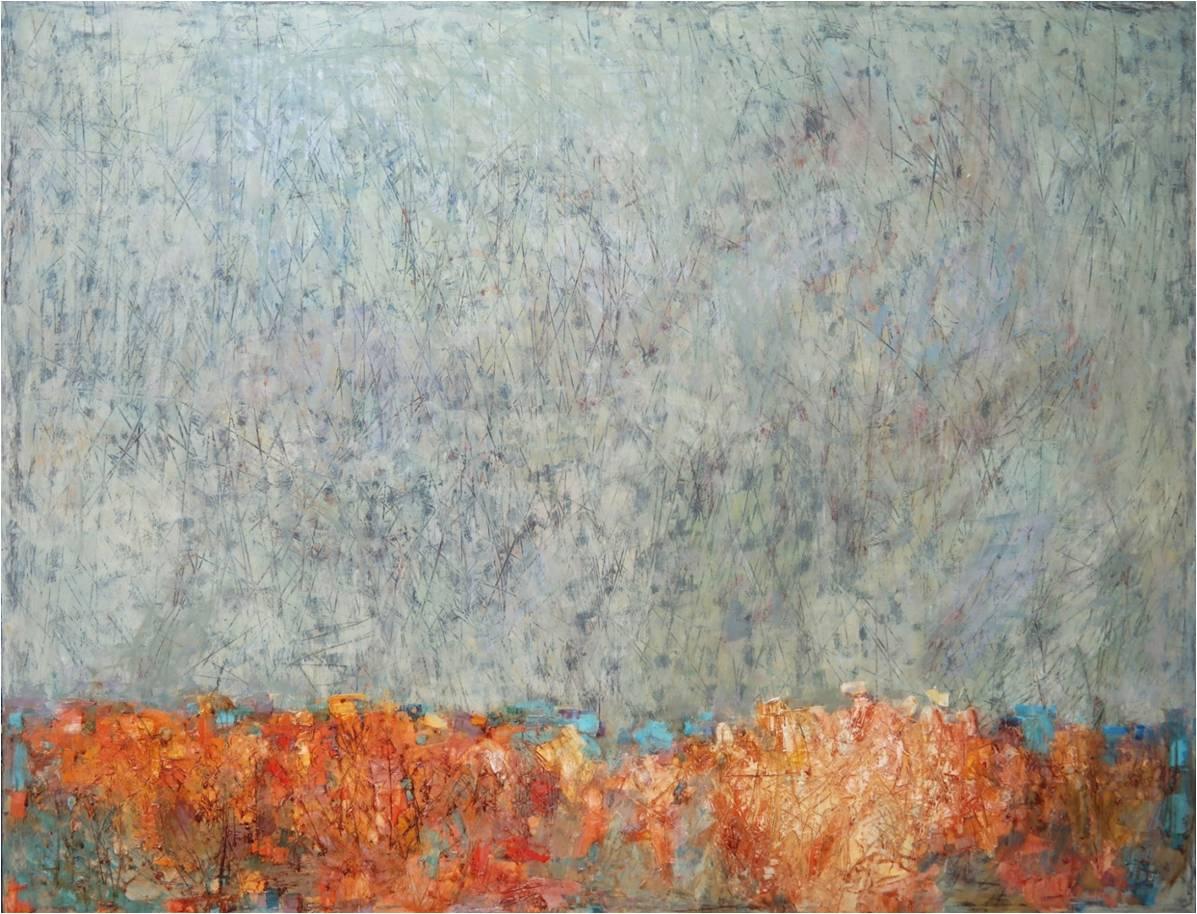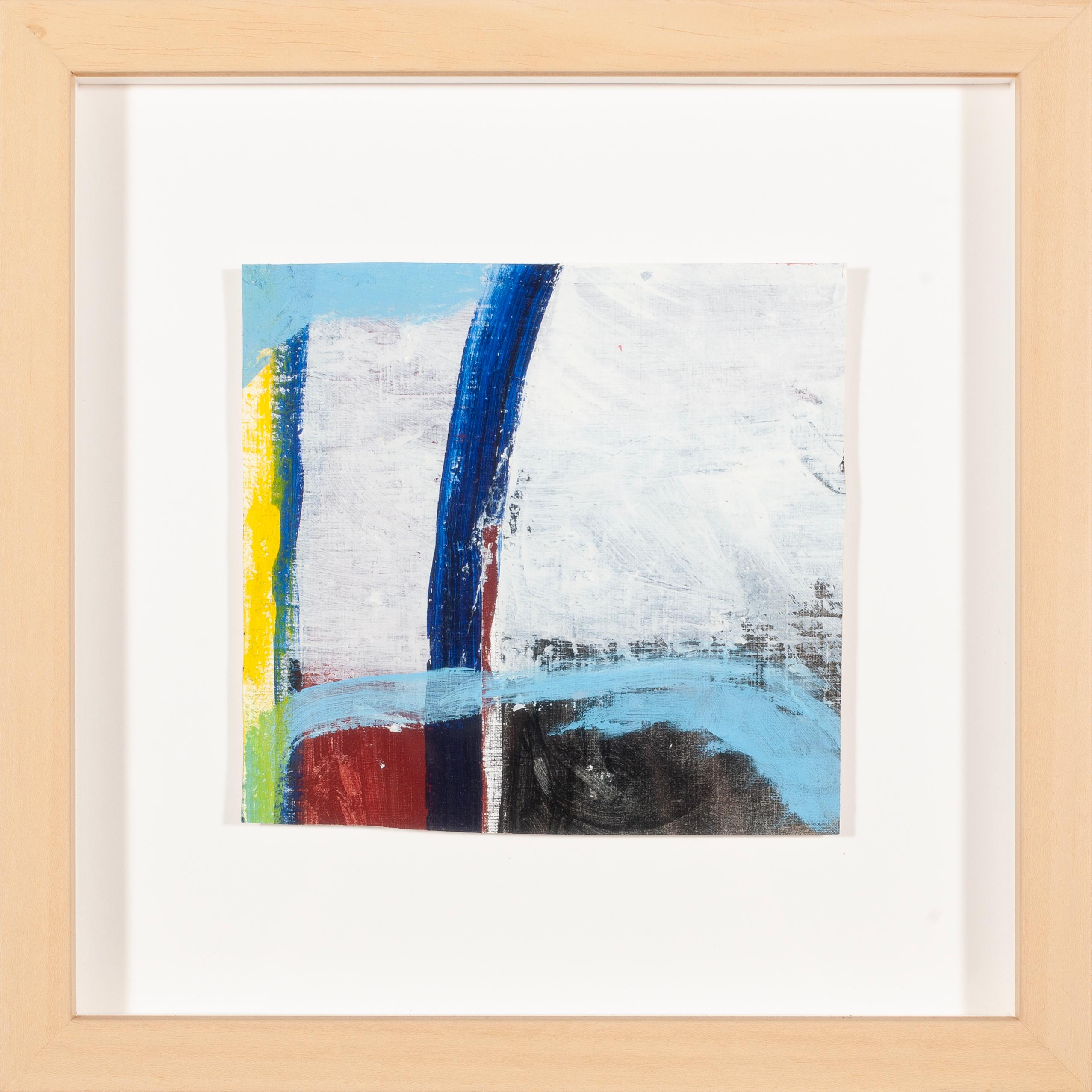Items Similar to "Work" Abstract Postwar Avant-Garde, Oil on canvas
Want more images or videos?
Request additional images or videos from the seller
Miyawaki Aiko"Work" Abstract Postwar Avant-Garde, Oil on canvas 1959
1959
About the Item
Aiko MIYAWAKI graduated from Japan Women's University (Western History Department) in 1952. In 1953, she was introduced to the Western-style painter Nobuya Abe, who taught her the art of Europe and America. From there, she was introduced to artist Yoshishige Saito, who encouraged her to show her art. In 1957, she left to study painting at the University of California and Santa Monica Municipal College. In 1959, she moved to Milan, where she met Enrico Baj, who became her artistic guarantor. She also befriended other great masters of the Italian avant-garde - Lucio Fontana, Enrico Castellani and Piero Manzoni.
Around this time, Miyawaki developed an innovative series in which enamel and marble powder - once mixed with paint - is applied directly to the canvas to create textured and sometimes patterned surfaces. These surfaces, "like dunes", express, in the words of historians, a "tension between transformations and something that remains unchanging". In December 1959, these works were exhibited for the first time at Tokyo's Yoseido Gallery. The artist followed this up in 1961 with another exhibition at Milan's Galleria Minima.
In 1962, another exhibition was held at the Tokyo Gallery. Her paintings attracted the attention of André Schoeller, a French art dealer visiting Japan. Immediately afterwards, the artist signed a contract with Schoeller and moved to Paris to produce her art, which was exhibited there. Miyawaki also met Man Ray, who became her friend and mentor. In 1963, the artist moved to New York, where she had an exhibition in 1964 at the Berta Schaefer Gallery (with Man Ray as foreword to the catalog). Returning to Japan in 1966, the artist gave up painting to take up sculpture. She began by using brass pipes, square steel tubes and copper cylinders - "essentially to investigate movement, the effect of light and the relationship to space".
Miyawaki will develop an innovative series in which enamel and marble powder - once mixed with paint - is applied directly to the canvas to create textured and sometimes patterned surfaces. These surfaces, "like dunes", express, in the words of historians, a "tension between transformations and something that remains unchanging". In December 1959, these works were exhibited for the first time at Tokyo's Yoseido Gallery. The artist followed this up in 1961 with another exhibition at Milan's Galleria Minima. In 1962, another exhibition was held at the Tokyo Gallery. Her paintings attracted the attention of André Schoeller, a French art dealer visiting Japan. Immediately afterwards, the artist signed a contract with Schoeller and moved to Paris to produce his art, which was exhibited there.
Miyawaki also met Man Ray, who became his friend and mentor. In 1963, the artist moved to New York, where she had an exhibition in 1964 at the Berta Schaefer Gallery (with Man Ray as foreword to the catalog). Returning to Japan in 1966, the artist gave up painting to take up sculpture. She began by using brass pipes, square steel tubes and copper cylinders - "essentially to investigate movement, the effect of light and the relationship to space". Her work was immediately exhibited at the Guggenheim Museum in New York, where she received a Purchase Award. This was followed by an exhibition at the Matsuya department store in Tokyo - where she met architect Arata Isozaki (Pritzker Prize 2019), whom she married for the second time in 1972.
Among his sculptures, it is his dynamic, large-scale series from the late 1970s - Utsurohi - that will be best known. Here, the artist seeks to achieve a form that excludes any sculptural weight, using stainless steel piano wire as the material. Here, she would mount thin, swirling metal rods on one or more bases, creating a sensation of movement on the installation site. These sculptures - in perfect dialogue with all the elements of nature - subtly manage to change form, echoing the Japanese concept of Utsuroi ("rapid or ephemeral change"). Miyawaki's monumental Utsuhori work will be dedicated and exhibited outdoors in numerous museums and institutions: Gunma Museum of Modern Art (Takasaki), Nagi Museum of Contemporary Art (Okayama), Museum of Modern Art (Kamakura & Hayama), Parvis de La Défense - Musée des Arts Décoratifs du Palais du Louvre (Paris), Palais des Sports Sant Jordi - Montjuic Olympic Plaza - Fundacio Miro (Barcelona), and Pitman Sculpture Garden (Houston). Miyawaki was honored for her innovation in contemporary Japanese art by the Japan Arts Foundation, and in 2003 (among many other awards and decorations) received the Ordre des Arts et des Lettres from the French Ministry of Culture.
- Creator:Miyawaki Aiko (1929 - 2014, Japanese)
- Creation Year:1959
- Dimensions:Height: 9.45 in (24 cm)Width: 13 in (33 cm)
- Medium:
- Movement & Style:
- Period:
- Condition:
- Gallery Location:PARIS, FR
- Reference Number:1stDibs: LU2572212720582
About the Seller
No Reviews Yet
Vetted Seller
These experienced sellers undergo a comprehensive evaluation by our team of in-house experts.
1stDibs seller since 2023
- ShippingRetrieving quote...Ships From: Paris, France
- Return PolicyA return for this item may be initiated within 7 days of delivery.
More From This SellerView All
- Pegomas by Kimura Chuta, Abstract Impressionism, New School of ParisLocated in PARIS, FRChuta KIMURA (also "Tchuta" or "Tshuta") is an allusive landscape painter and pastellist. His name - composed of the words Ki (tree) and Mura (village) -...Category
1980s Abstract Landscape Paintings
MaterialsOil
- Abstract Painting by Postwar Japanese Avant-Garde Artist Toshimitsu ImaiBy Toshimitsu ImaiLocated in PARIS, FRToshimitsu Imai (1928-2002) emerges as a remarkable figure in the postwar Japanese avant-garde art scene. Renowned for his abstract paintings, Imai's artistic trajectory defied conve...Category
1960s Abstract Abstract Paintings
MaterialsOil
- Deux villageois by Kimura Chuta, Abstract Impressionism, New School of ParisLocated in PARIS, FRChuta KIMURA (also "Tchuta" or "Tshuta") is an allusive landscape painter and pastellist. His name - composed of the words Ki (tree) and Mura (village) -...Category
1970s Abstract Landscape Paintings
MaterialsOil
- Sans titre by Kimura Chuta, Abstract Impressionism, New School of ParisLocated in PARIS, FRChuta KIMURA (also "Tchuta" or "Tshuta") is an allusive landscape painter and pastellist. His name - composed of the words Ki (tree) and Mura (village) -...Category
1980s Abstract Landscape Paintings
MaterialsOil
- Road by Kimura Chuta, Abstract Impressionism, New School of ParisLocated in PARIS, FRChuta KIMURA (also "Tchuta" or "Tshuta") is an allusive landscape painter and pastellist. His name - composed of the words Ki (tree) and Mura (village) -...Category
1980s Abstract Landscape Paintings
MaterialsOil
- "Color Interlude", Abstract Expressionism, Lyrical Abstraction by Lea NikelLocated in PARIS, FRLea Nikel was a prominent Israeli artist known for her distinctive style and significant contributions to the world of art. Born in 1918 in the city of Tarnopol (now Ternopil, Ukrain...Category
1960s Abstract Expressionist Abstract Paintings
MaterialsOil
You May Also Like
- An Amber MareLocated in Barcelona, ESOil painting on canvas.Category
2010s Abstract Abstract Paintings
MaterialsOil
- Horse ParadiseLocated in Barcelona, ESOil painting on canvas.Category
2010s Abstract Abstract Paintings
MaterialsOil
- The White Line, triptych- Yesterday, Today, TomorrowLocated in Barcelona, ESOil painting on canvas.Category
2010s Abstract Abstract Paintings
MaterialsOil
- Composition N 32. Oil on Canvas. 59 X 78 Inch. 2021.Located in Brooklyn, NYArt pieces of Giorgi Vepkhvadze are Abstract expressionism for modern interior designs for Residential and Commercial spaces. Well suited for New York Apartments and Houses. Artist g...Category
2010s Abstract Abstract Paintings
MaterialsCanvas, Oil
- Transitions and Thresholds No. 1Located in Columbia, MOMeyer studied art at University of Central Missouri, Indiana State University and received her degree in painting and drawing from Columbia College. She has had the privilege of havi...Category
21st Century and Contemporary Abstract Abstract Paintings
MaterialsWax, Oil, Archival Paper
- Untitled 01 [Remains of the Remains 01] - Contemporary, Black, White, AbstractBy Zsolt BerszánLocated in Berlin, DEUntitled 01 [Remains of the Remains 01], 2018 oil on canvas 78 47/64 H x 59 1/16 W in 200 H x 150 W cm The large-sized paintings, signed by Zsolt Berszán...Category
2010s Abstract Expressionist Abstract Paintings
MaterialsCanvas, Oil





![Untitled 01 [Remains of the Remains 01] - Contemporary, Black, White, Abstract](https://a.1stdibscdn.com/zsolt-berszan-paintings-untitled-01-remains-of-the-remains-01-contemporary-black-white-abstract-for-sale/a_6863/1643236113509/Untitled_01_oil_on_canvas_200x150cm_2018__master.jpg)